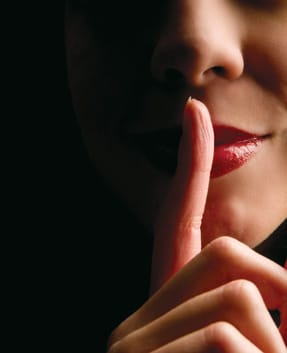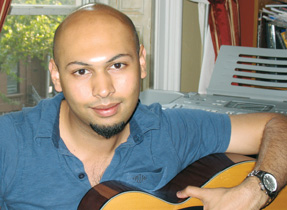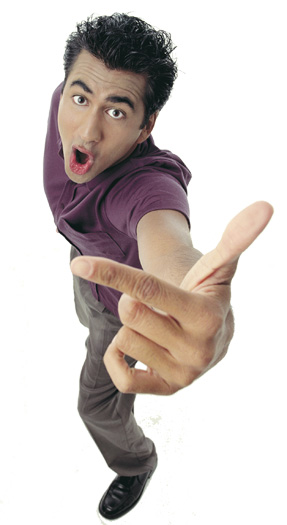Life
The Secret Life of the American Desi

The ABCD's - American Born Confused Desis - is a subculture expected to become the next batch of medical students, entrepreneurs and cancer-curing researchers for which Indian parents laid the foundation
|
It’s a Saturday night in Gainesville, Florida. Sari-clad Indian mothers on one side, tipsy college students on the other. Penn Masala, a 14-man fusion a capella group, is singing in their silk kurta pyjamas to a packed auditorium.
Karan Shah* spends most of the concert with his head bowed under a conductor’s cap, thumbs darting across his Blackberry. As the final Bollywood song fades, the University of Florida students head home for more rum and cokes before heading downtown. Shah eats a slice of New York style pizza with friends and is dropped at his apartment while the group makes plans. At midnight he drives an hour and a half west to meet one of the “big guys.”
They chat. They smoke. Shah gives him money and receives his share of marijuana and some hash. At 4 a.m. he pulls back into his apartment complex, waving to his friends who stumble outside their doors. “I want to be my own boss. I want to be a partner in my law firm, I want to be the CEO of my company, I want to be the founder of my company, I want to work on my own schedule. I want to be a serial entrepreneur,” Shah, 19, said one evening as he played hip-hop videos on YouTube. Right now the young entrepreneur, a philosophy and business student, pays for his rent, social life and gas with the $450 he makes each week from selling pot. His parents, who he describes as laid back, but “hardcore about academics,” think that his scholarships are paying for his tuition and they provide him money for food. And that isn’t unlikely. Shah scored almost perfect on his SATs and maintains a 3.6 GPA. He plans to go to law school. The ABCD’s – American Born Confused Desis – is a subculture expected to become the next batch of medical students, entrepreneurs and cancer-curing researchers for which Indian parents laid the foundation. They are expected to become neurosurgeons, marry from the same state in India and embody the best of both cultures. Yada, yada…. On their own time, they drink, maybe smoke, date non-desis, or take classes in poetry and acting. While not all are hiding drug-dealing careers or two-year relationships, not just a few find themselves lying in bed on Sunday morning saying, “Yea Mom, I’m at the library,” and “Yes, I aced my Organic Chemistry exam.”
This is not a story about the bad eggs or the exceptions. You don’t have to reach far to find hidden tales. This is story about my friends, their friends and our families – the struggle to straddle two countries and remain true to our self. It starts at home with the spelling bees, the reading competitions and gifted classes. Get an A plus, not just an A, parents say before the kids can tie their shoelaces or lose a tooth. Nikhil Palekar, 30, a New York-based psychiatrist originally from Mumbai, says that parents see their child’s performance as a reflection of themselves, “The Indian parent takes it 10 notches further.” And it doesn’t stop at report cards. When it is time to choose a profession, the pressure is turned up. “The idea of liberal arts doesn’t make sense to my parents,” said Tufts student Sonali Narayanan*. The 21-year-old challenges her parent’s conservative ideals. She pierced her belly button, studied (and dated) in Argentina, and became a bartender. But she is frustrated at having to lie about something as simple as taking a science course at school. While her track in psychology is acceptable to her family, she knows they would rather she get an M.D. Fellow student and friend, Molly Lorenzo, said Narayanan’s strong personality and intelligence made her retaliation against her family more extreme. “It definitely backfired on her parents,” she said. When Narayanan grew up in affluent New Jersey suburbs, she battled early curfews, frantic “paranoid” calls from her mother, and the idea that as an Indian, she was held to different standards. She credited the mindset to their financial status. “It’s like ‘look at what we gave you in life,'” she said. “They think if they give you a car, you should get good grades and come home by 11.”
But she sees hypocrisy in her upbringing. She can’t speak her mother tongue, understand Hindu philosophy or relate to India. The cultural aspect was not imparted as much as the fear that she would become a crazy American teenager. Palekar says that parents’ extending their bank accounts and cushy lifestyle to the kids results in a dependency that keeps their sons and daughters from saying, “screw you” and doing what they want. “It is their way of asserting independence and feeling comfort in their country,” he said. Purnima Sahgal, a Boston-based mother of two boys, rebelled to pursue her passion for the arts. Back in Hyderabad, when she wore her hair to her hips and pulled on bellbottoms, her military father disapproved. “Especially in the Indian community, we don’t see the arts as something to aspire to, or something intellectual,” she said. “They see creative writing as some loosey-goosey thing that people who aren’t as bright do.” Her escape was an art school in the U.S., which she pretended was the only one to offer her admission. Now, more than 20 years later, Sahgal, a graphic designer, is watching her eldest son graduate high school and pursue acting and computer science. Other parents are not optimistic about her son’s career choice and tell her that it is impractical. But, she said, a limited understanding of life and spiritual needs has closed the minds of Indian parents. “If you tell your kid constantly they can’t do something, of course they’re going to have a hard time doing it,” Sahgal said. Her son, a senior in high school, was accepted into a prestigious acting recently and she could not be more excited. What animates most Indian parents is the five-day, bejeweled Indian marriage, which is the subject of books, endless dinner table conversation and movies like Monsoon Wedding and Bride and Prejudice. “The whole idea of marriage, relationships, is completely a 180 from the traditional way of looking at it in India,” said Shanti Kale*, 22, of her parents. The willowy business major was told all her life that her parents would find her a Hindu husband who spoke the same language. During her last year in high school she started seriously dating a “white kid,” a relationship that would involve almost three years of lying to her parents. A dialogue was not an option. “They’d say that’s cool for white people, but that’s not cool for you, because you’re Indian and you’re our kid. You’re going to have a good life because we had a good life,” Kale said. Palekar believes this lack of communication leads to depression, anxiety and more lies. He adds that the immigrant perception of their homeland is outdated. “They always feel like America is threatening for their children. But in big cities in India, people date, have one night stands and have relationships with people from other backgrounds.” Twenty-eight-year-old Amrita Singh* is a confident, Ivy League-educated woman who has dated black, white and Indian men. She told her parents about her first boyfriend, a black coworker, when the relationship became serious. They agreed to meet him, but were instantly critical. “They claim it has nothing to do with the fact that he was black. They claim it was because he didn’t come across as being very well educated and he came from a broken home,” she said. On a trip to India, her aunts and uncles sat her down and told her that she was “killing her father” and destroying the family. Her parents told her that she wouldn’t be a part of the family if she stayed with her boyfriend. “The first time (my boyfriend) experienced it, he stayed up crying. He wanted so badly for my parents to accept him, but he knew no matter what he did, they wouldn’t.” Singh became depressed. She was fighting with her parents and bickering with her boyfriend. Her father was drinking heavily and her relatives were not letting up. She didn’t want to end her relationship, because her parents would win, but eventually she moved on. Now with lavish wedding plans and parents involved, Singh said, she is relieved not having to explain a Hindu ceremony or deciding what religion to raise their children. But she remains convinced that love has no race or religious barrier. Singh said that unlike her parents, she would accept anybody that her kids want to marry if they are good people. “I’ll be happy whether they’re Indian, white, black, Chinese – it doesn’t make a difference.” *Names have been changed to protect identity
|






